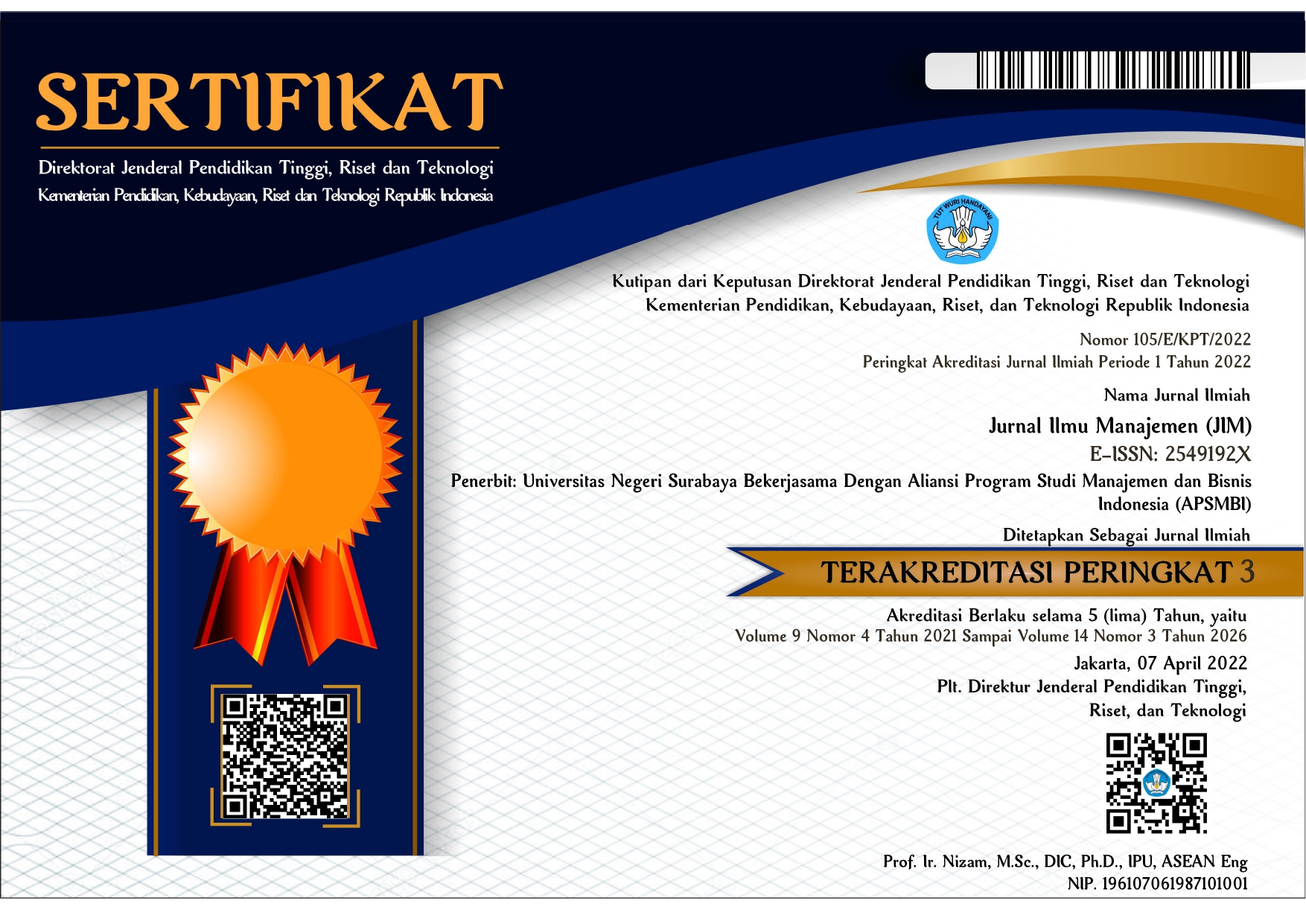Dividend policy in indonesia: evidence from manufacturing companies
DOI:
https://doi.org/10.26740/jim.v12n1.p83-97Keywords:
Collateralizable Assets, Company Life Cycle, Corporate Governance, Dividend Policy, Investment OpportunitiesAbstract
This research attempts to identify the factors affecting dividend policy decision. The independent variables of this research are corporate governance (proxied by audit quality and board independence), investment opportunities, collateralizable assets, and company life cycle. Also previous years dividend and profitability as control variables. The population of this research is manufacturing companies listed on the Indonesia Stock Exchange (IDX) during 2018-2022. The sample was selected using purposive sampling methods and 62 sample companies that met the criterias were obtained. The data was analyzed using logistic regression analysis technique. This findings of this research confirm that company life cycle has a positive and significant effect on dividend policy. As companies reach the maturity stage, the propensity to pay dividends increases. Meanwhile, corporate governance, investment opportunities, and collateralizable assets do not affect dividend policy of manufacturing companies. Furthermore, the control variables previous years dividend and profitability have a positive and significant effect on dividend policy of manufacturing companies.
References
Aigbovo, O., & Evbayiro-Osagie, I. E. (2022). Firm Life Cycle Stage and Dividend Payout of Listed Non-Financial Firms in Selected Sub-Saharan African Countries: A Sectoral Analysis. Sriwijaya International Journal of Dynamic Economics and Business, 5(3), 207. https://doi.org/10.29259/sijdeb.v5i3.207-228
Baker, H. K., Singleton, J. C., & Veit, E. T. (2011). Survey Research in Corporate Finance. In Oxford University Press.
Hartono, P. G., Sari, W. R., Tinungki, G. M., Jakaria, J., & Hartono, A. B. (2021). The Determinants of Dividend Policy: An Empirical Study of Inconsistent Distribution of Dividends Using Balanced Panel Data Analysis. Media Ekonomi Dan Manajemen, 36(2), 89. https://doi.org/10.24856/mem.v36i2.2023
OECD. (2004). OECD Principles of Corporate Governance 2004.
Singla, H. K., & Samanta, P. K. (2018). Determinants of dividend payout of construction companies : a panel data analysis. Journal of Financial Management of Property and Construction. https://doi.org/10.1108/JFMPC-06-2018-0030
Downloads
Published
How to Cite
Issue
Section
License

This work is licensed under a Creative Commons Attribution-NonCommercial 4.0 International License.
 Abstract views: 1580
,
Abstract views: 1580
, PDF Downloads: 950
PDF Downloads: 950










